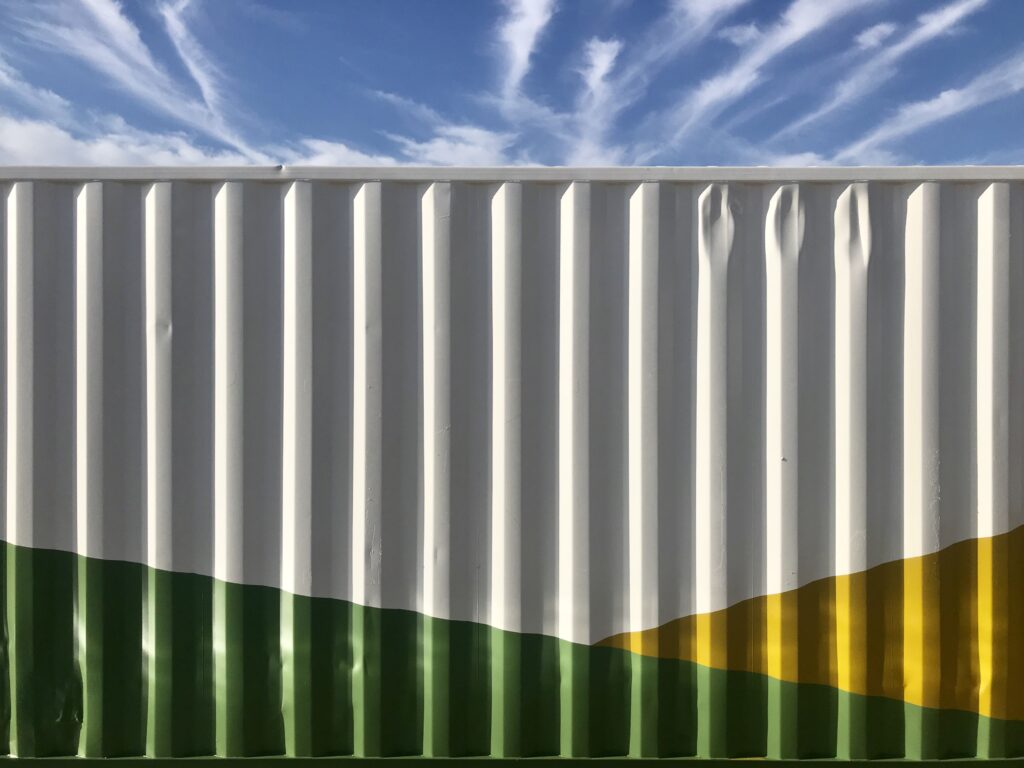Builders, designers, doctors and refugees would all agree: constraints lead to creativity. When faced with limited resources, or time, or space—or all three, you have to adapt and innovate. Take nonprofit Pipeline Worldwide‘s “Battle of the Boxes” for example, a design and construction competition that will serve people in need. Three teams were challenged to convert shipping containers into housing for healthcare workers at refugee settlements in Uganda. Sundt and its partners on Team Sus-tainers put together quite the project.
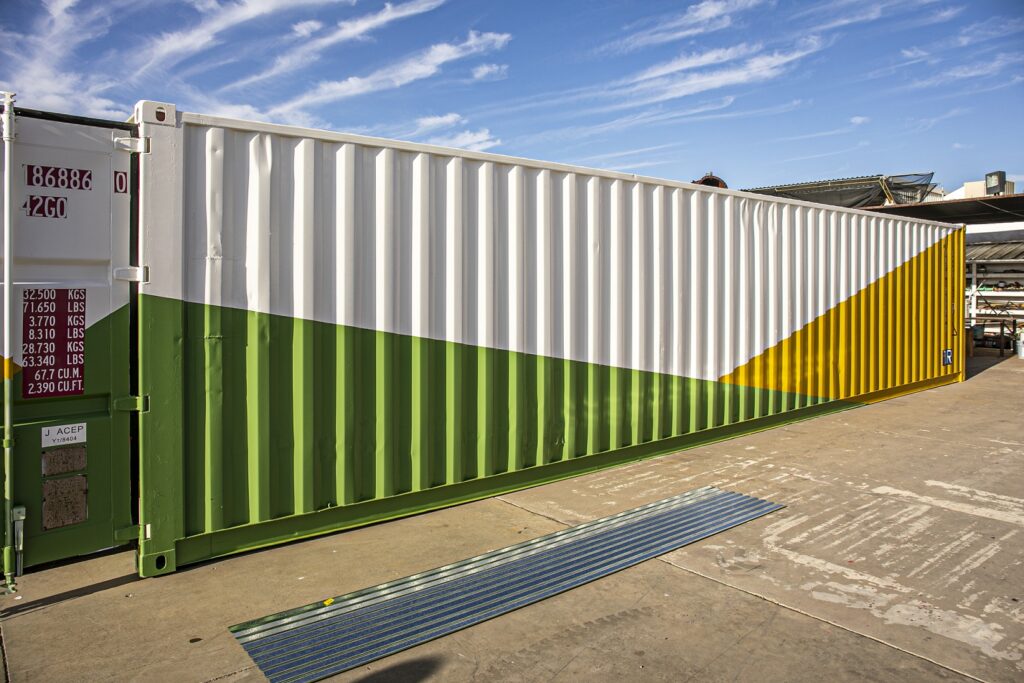
The Need is Great; The Budget is Tight
The shipping containers will go to Palorinya refugee settlement, which houses over 130,000 people who have fled their homes to escape violence in neighboring South Sudan. Many lack clean water, basic goods, education and healthcare. Organizations like Pipeline Worldwide and their partner Medical Teams International are working to change that, but there are challenges. “The biggest obstacle for healthcare is inadequate housing for medical staff,” said team member Ken Kobs, Territory Manager for Smith & Nephew. “Four out of five healthcare workers here are living in tents or other temporary shelters.” Heat, rats, and other factors make recruiting and keeping qualified healthcare workers here a huge challenge.
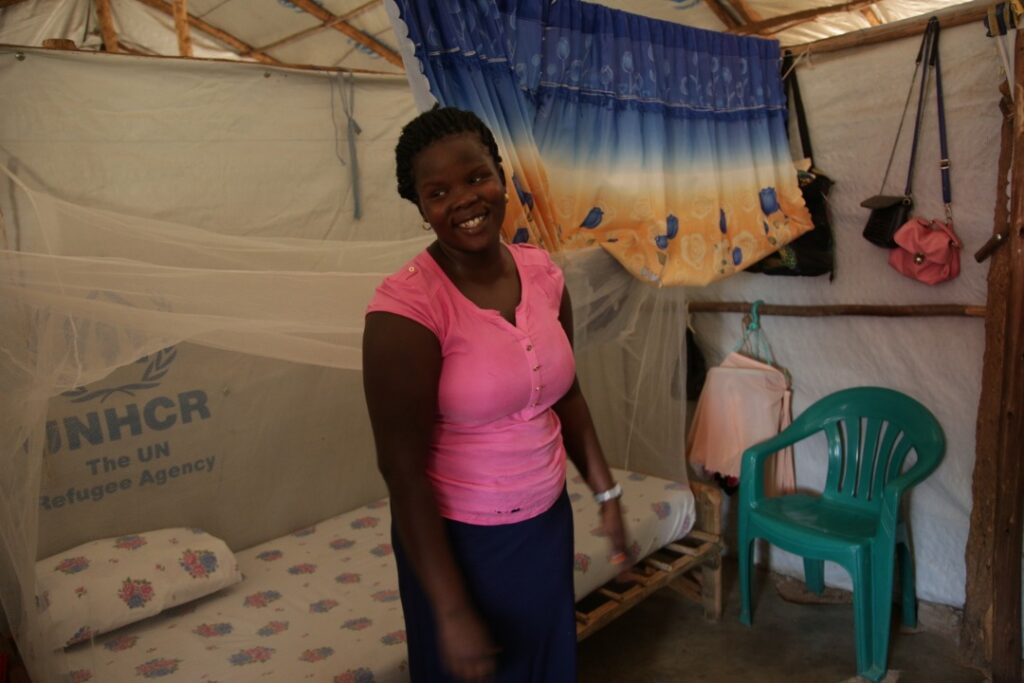
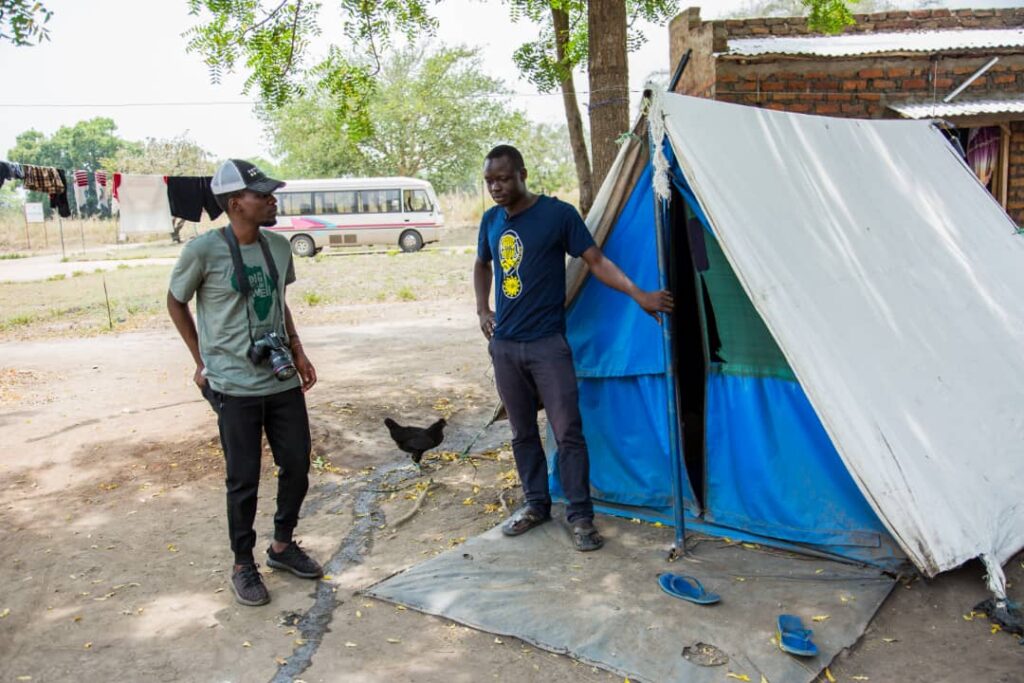
Back in the U.S., Sundt and our partners were given a 40-foot shipping container and a project budget of $15,000. The objective: to convert this into housing for six medical personnel. Also, it would need to serve as a prototype that would be sustainable and replicable with materials in Uganda. Pipeline Worldwide plans to re-purpose 50 shipping containers into staff housing by 2025. Lastly, the construction could not alter or puncture the structure of the container before its shipment—and, just to up the stakes, the units would have to be collapsible enough for the container to hold $300,000 worth of medical supplies being shipped to local hospitals.
What’s in the Box?
For one shipping container to check all of these boxes, the team had to get creative with commonly available materials. Also, they needed builders who’d seen a thing or two. Sundt employee-owners Sean Ray, Austin Nalwood, Josue Ponce, Darry Welker, and Rick Garcia stepped in. Each gave technical expertise on design, assisted with material procurement, and even personally fabricated many of the components.
“A big difference-maker was the UniStrut design,” said Sundt Project Manager and Pipeline Worldwide Board Member Andrew Wegner. “This is welded on to create a ceiling-mounted support structure for the living units’ movable walls. The UniStrut allows the whole container space to be modular and flexible. And it’s a building material you can find all over the world, including in Uganda.”
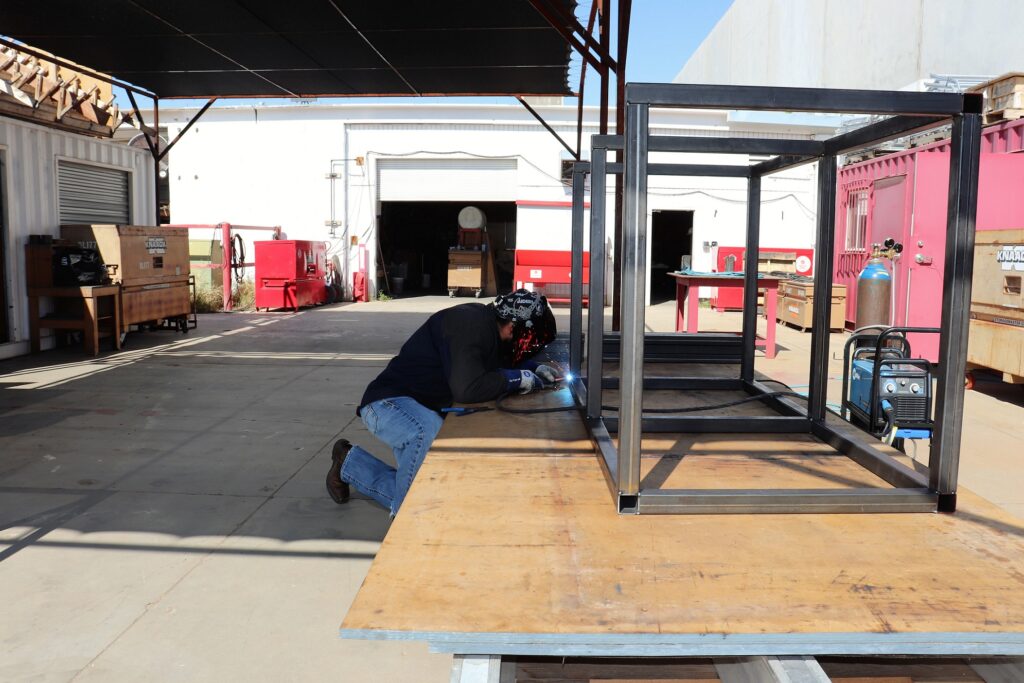
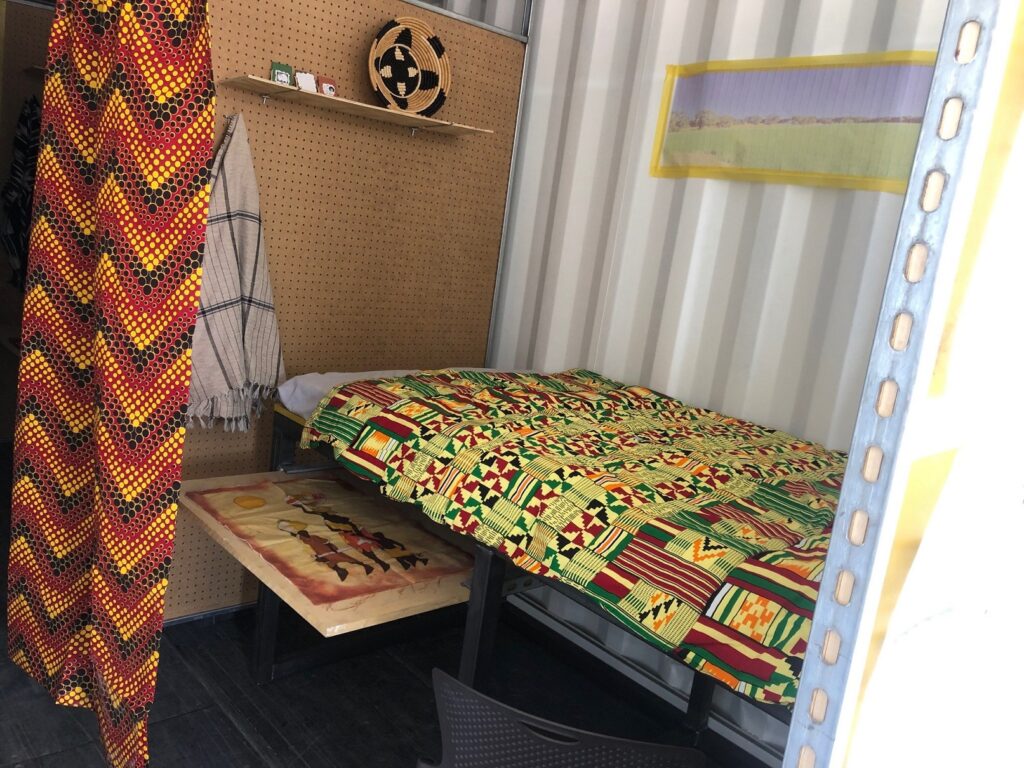
“We built these units to last a long time,” said Andrew. “And the container is designed with individual privacy as well as community in mind,” he said, pointing to a rendering showing the centrally placed French doors and porch extension, additions to be made once the container is placed on its concrete slab in Uganda.
Is it Sustainable?—Replicable, Scalable, Energy-Efficient?
A closed format calls for an open-minded design team. Lots of forethought and engineering went into not only the model’s longevity but the ease of Ugandan builders duplicating it on site. Students from Engineers Without Borders at Arizona State University designed the shipping container’s roof. It consists of steel trusses and corrugated steel panels, pieces that will ship separately inside the container. On top, the roof will house a rainwater capture system and solar panels to power the whole unit. The two- by three-foot solar panels will generate 1,400 watt hours per day.
All possible efforts were made to ensure the security, privacy and comfort of occupants, while using building materials that would be affordable and accessible in Uganda. “It’s amazing to see this all come to fruition,” said Andrew. “To have all of our team members step up like they did, it just makes me really proud to serve with Pipeline Worldwide and to work for Sundt.”
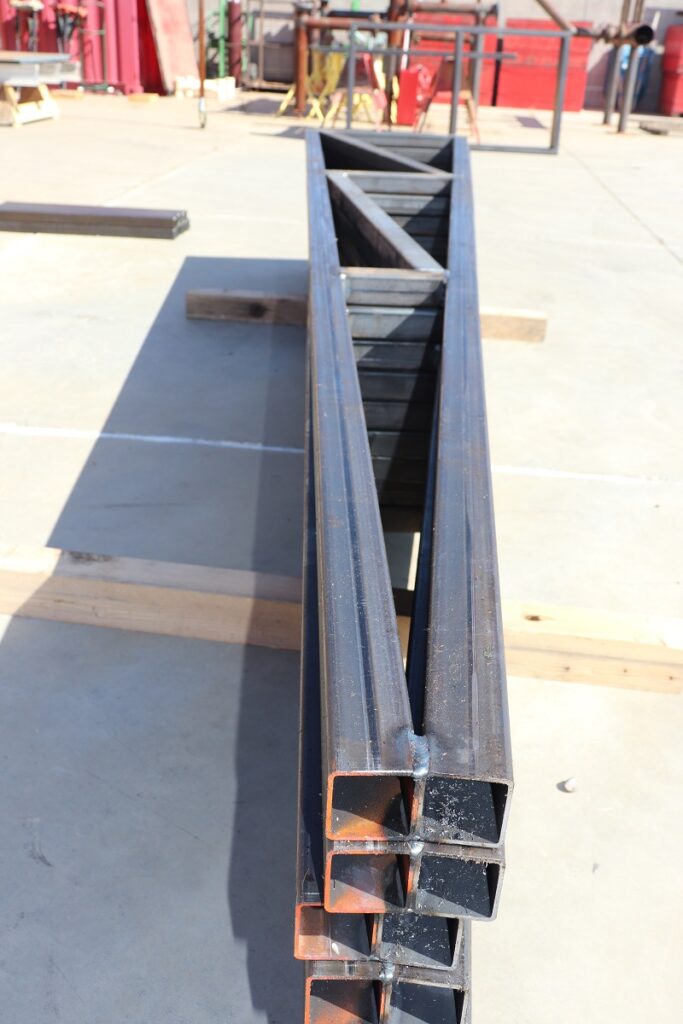
Results, Upcoming Events, and How You Can Help
The competition kicked off in August 2019 and concluded Thursday, May, 14, 2020. Nine judges including architects, developers, engineers, brokers, and interior designers determined the Best Overall winner. The three teams that participated were:
Sus-tainers: Sundt Construction, RED Development, Cuningham Group, Westwood Professional Services, ASU, and Smith & Nephew.
#1Team4Uganda: DMB, DWL Architects, McCarthy Building Companies, East Valley Institute of Technology, Clearway Energy, and HonorHealth
Team In A Box: Alter Group, Corgan, McCarthy Building Companies, Wespac, Grand Canyon University, West-MEC, Wood Patel and SMIL
The Best Overall winner was announced May 18, 2020 as #1Team4Uganda. Other awards include: Best in Design Excellence, Best in Sustainability, Best in Constructability, Best in Design Innovation (Object), MVP (Person), and People’s Choice. These will all be announced at Pipeline Worldwide’s annual event, Getting WELL Connected, on October 7, 2020.
If you’d like to attend, donate to the cause, or find other ways to help out, contact founder Jamie Nollette at jnollette@pipelineworldwide.org. Pipeline Worldwide is a registered 501(c)3 nonprofit, and Sundt is proud to partner with them as well as our industry colleagues in making the vision behind Battle of the Boxes a reality.
